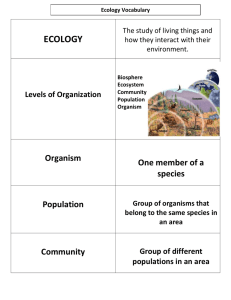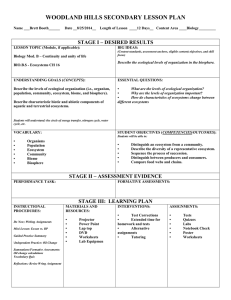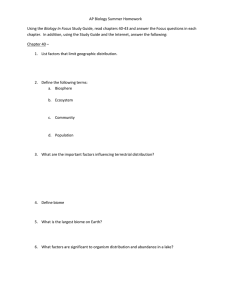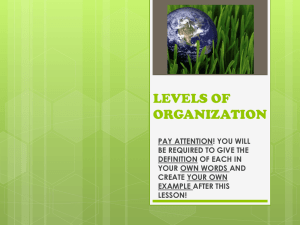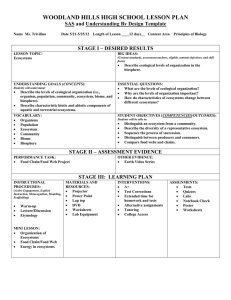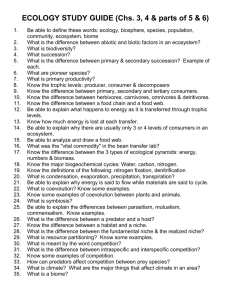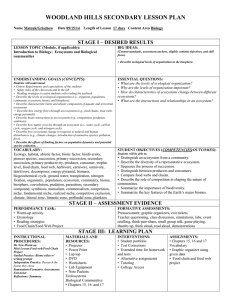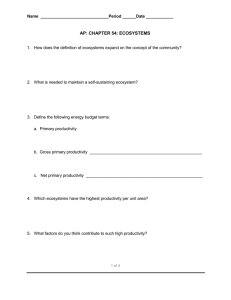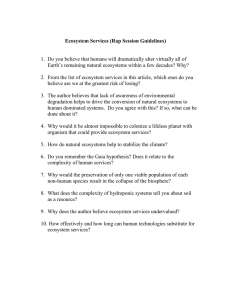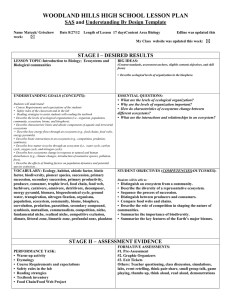Final Exam Review Sheet
advertisement
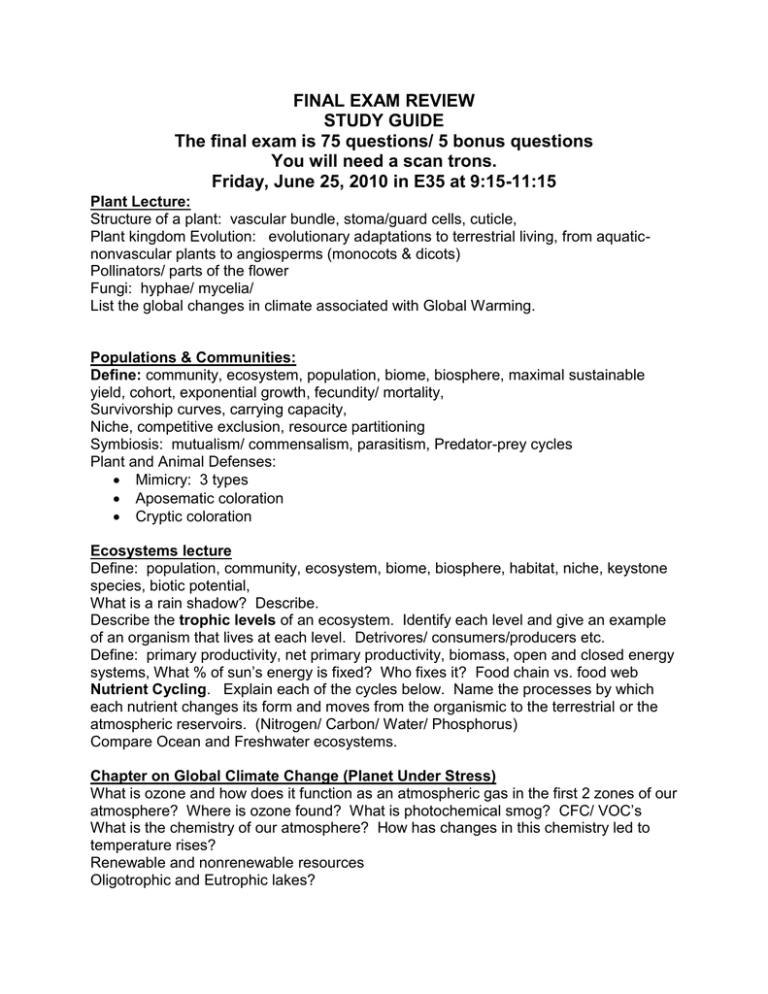
FINAL EXAM REVIEW STUDY GUIDE The final exam is 75 questions/ 5 bonus questions You will need a scan trons. Friday, June 25, 2010 in E35 at 9:15-11:15 Plant Lecture: Structure of a plant: vascular bundle, stoma/guard cells, cuticle, Plant kingdom Evolution: evolutionary adaptations to terrestrial living, from aquaticnonvascular plants to angiosperms (monocots & dicots) Pollinators/ parts of the flower Fungi: hyphae/ mycelia/ List the global changes in climate associated with Global Warming. Populations & Communities: Define: community, ecosystem, population, biome, biosphere, maximal sustainable yield, cohort, exponential growth, fecundity/ mortality, Survivorship curves, carrying capacity, Niche, competitive exclusion, resource partitioning Symbiosis: mutualism/ commensalism, parasitism, Predator-prey cycles Plant and Animal Defenses: Mimicry: 3 types Aposematic coloration Cryptic coloration Ecosystems lecture Define: population, community, ecosystem, biome, biosphere, habitat, niche, keystone species, biotic potential, What is a rain shadow? Describe. Describe the trophic levels of an ecosystem. Identify each level and give an example of an organism that lives at each level. Detrivores/ consumers/producers etc. Define: primary productivity, net primary productivity, biomass, open and closed energy systems, What % of sun’s energy is fixed? Who fixes it? Food chain vs. food web Nutrient Cycling. Explain each of the cycles below. Name the processes by which each nutrient changes its form and moves from the organismic to the terrestrial or the atmospheric reservoirs. (Nitrogen/ Carbon/ Water/ Phosphorus) Compare Ocean and Freshwater ecosystems. Chapter on Global Climate Change (Planet Under Stress) What is ozone and how does it function as an atmospheric gas in the first 2 zones of our atmosphere? Where is ozone found? What is photochemical smog? CFC/ VOC’s What is the chemistry of our atmosphere? How has changes in this chemistry led to temperature rises? Renewable and nonrenewable resources Oligotrophic and Eutrophic lakes? Major Biomes Renewable resources Aquatic Ecosystems; Salt and freshwater. Name the zones.
